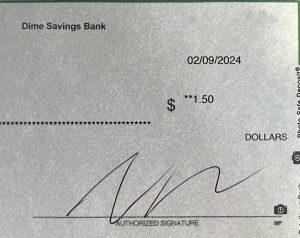The Interlude of Busyness:
The orchestra’s recent performance consumed my days and nights, leaving scant moments for reflection or updates. With the concert behind me, a brief pause in the composition allows me to turn my attention to lingering tasks and the anticipation of our next concert in May.
A Harmony of Endeavors and Earnings:
Amid the whirl of concert preparation, royalty checks from my publisher and ASCAP arrived, a modest 🤣 but appreciated acknowledgment of my work.


Given my publisher’s focus on high school band and small ensemble pieces, there’s a dissonance between their specialty and my current creative direction. This disjunction sparks a thought I should compose more small ensemble works, potentially bridging the gap between my musical evolution and their publishing niche.
Composing the Tapestry:
A significant milestone was reached in the development of my latest composition—the completion of the “tape” portion’s rough first draft. The third section, infused with themes of hope and the potential for change, interlaces quotes from its predecessors, culminating with Reagan’s iconic call to “tear down this wall,” thus leading us into the coda. I’ve merged my two different files into a singular narrative, setting the stage for orchestral integration through Finale.
Reflections and Revisions:
Despite the progress, feedback from a composers’ forum on the phase section remains unaddressed. My strategy? To draft the composition in its entirety before revisiting these insights, ensuring a holistic view of the piece before embarking on adjustments.
Orchestrating Emotions:
The journey into the orchestral part of the composition has begun, with progress on the opening segments. After the introduction, the initial section of the first part is a meditation on societal fear in a post-9/11 world and its push toward authoritarianism. The orchestra marks this by the ominous Dies Irae theme, resonating with the echoes of “fear.” My current focus lies in transitioning into the subsequent, more positive segment, seeking a balance that mirrors the complex emotional landscape of our times.
As this symphonic journey unfolds, the blending of life’s crescendos with musical cadences continues to challenge and inspire. Stay tuned for further updates as I navigate these chords of creativity and reflection.


